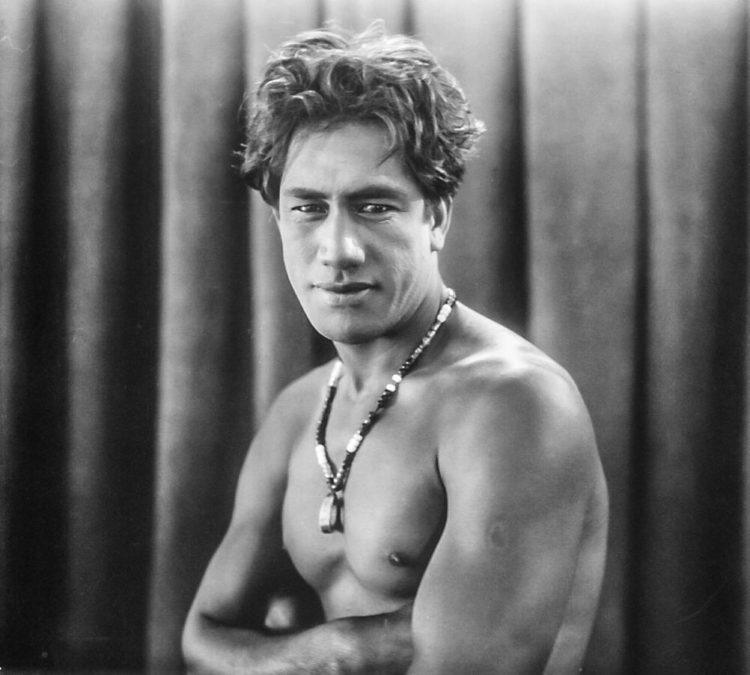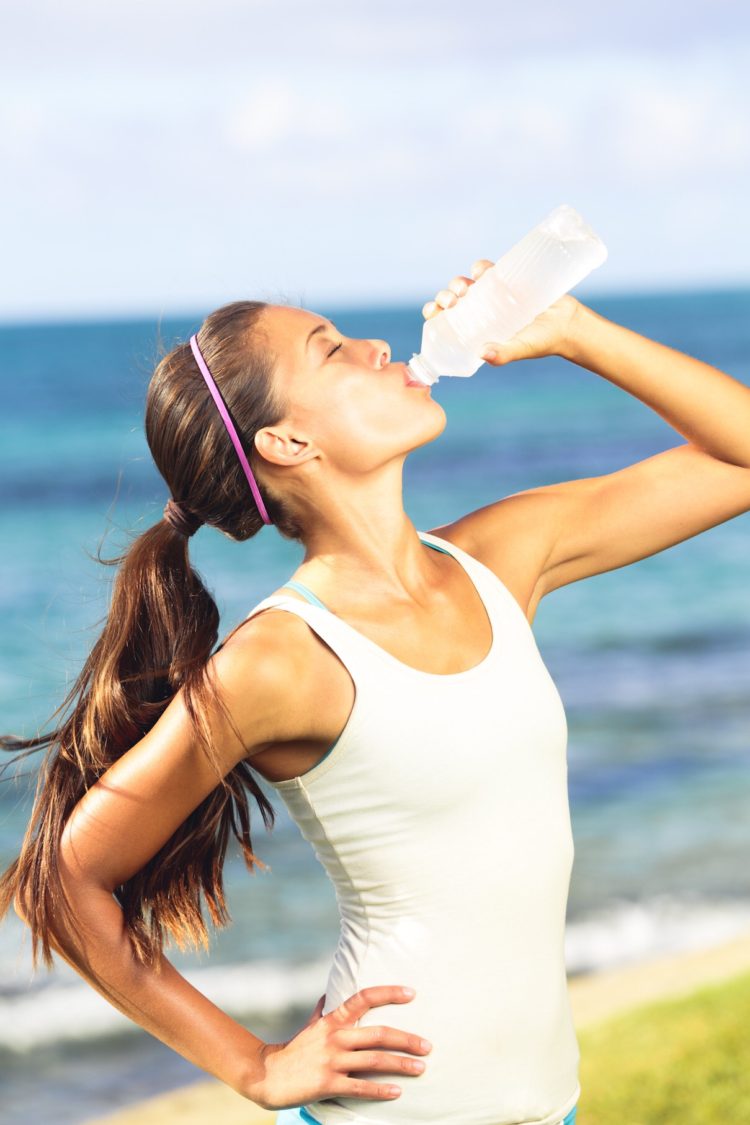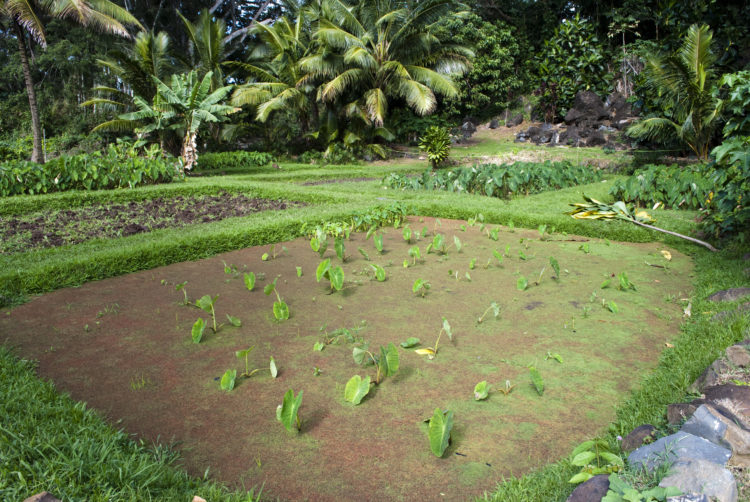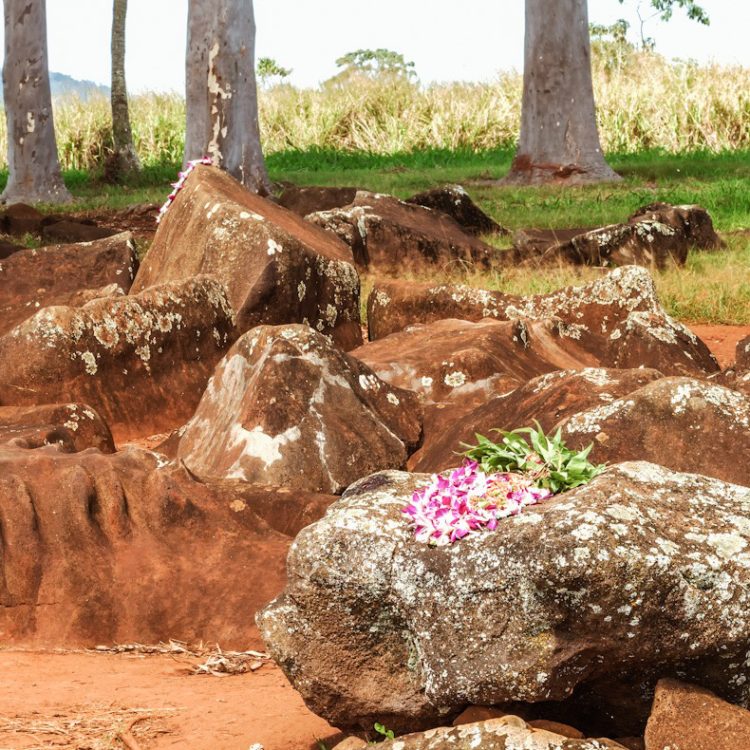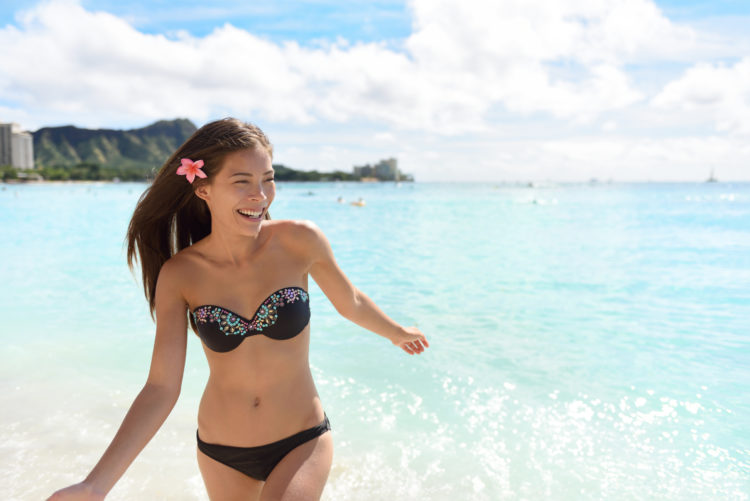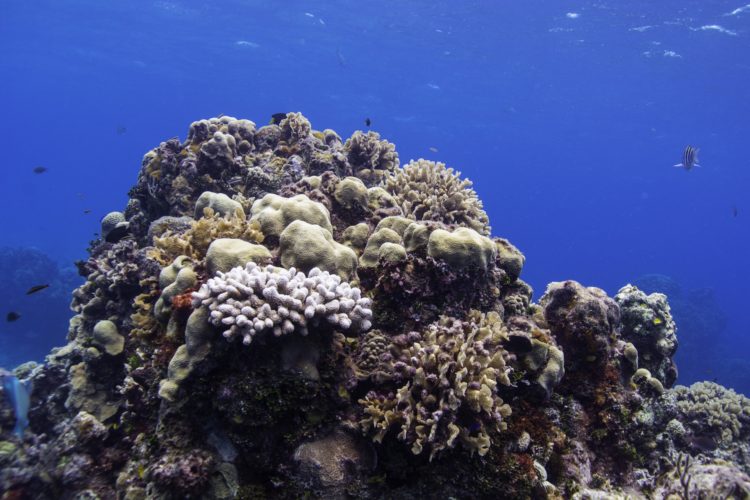Duke Kahanamoku was more than just the first native Hawaiian to bring he’enalu (surfing) to the United States mainland — he was the first native Hawaiian to swim competitively at an international level and will forever be Hawaii’s first Ambassador of Aloha. This month we’re shedding light on another Hawaiian Hero.
Duke Paoa Kahinu Mokoe Hulikohola Kahanamoku was born on August 24, 1890 at the home of Bernice Pauahi Bishop in Honolulu. His parents, Duke Halapu Kahanamoku and Julia Pa’akonia Paoa, were lower-level nobles whose duty was to serve the monarchy. His family moved to Kālia, Waikiki three years after he was born to be closer to extended family. Duke ended up being raised alongside his three sisters, five brothers and thirty-one Paoa cousins with the Pacific Ocean as their backyard. Little Duke attended Waikiki Grammar, Kaahumanu and Kamehameha schools before dropping out of school early to help financially support his family.
Duke’s obsession with the ocean began at a very early age. As a young child, he would swim in search of silver coins through shark-infested waters at the Honolulu Harbor. He also devoted a lot of time to Waikiki beach perfecting his swim strokes and surfing skills. His swimming abilities continued to blossom, and at the raw age of twenty-two Duke earned a spot on his first American Olympic Swimming team. He would be the first-ever native Hawaiian to compete at such a level. Duke won his first gold medal in the 100-meter freestyle and a first silver medal with the 4×200-meter U.S. men’s freestyle relay team in the 1912 Summer Olympics in Stockholm. He also won gold medals in the 1920 Antwerp Olympics and silver medals in the 1924 Paris Olympics (alongside fellow Hawaiians Pua Kealoha and Samuel Kahanamoku).
Mainland sportswriters quickly took notice of Kahanamoku’s athletic abilities and noticeably positive demeanor, and nicknamed him “The Duke.” He decided that he would then use his athletic notoriety to bring Hawaii and its aloha-based culture into the national spotlight. Duke is best remembered for introducing the ancient Hawaiian art of surfing — a sport unheard of outside of the islands — to the United States mainland. While Duke was a swimming champion, his true passion was always surfing.
He would provide surfing demonstrations on his 16-foot koa wood, finless surfboard to both the east and west coast of the United States with the hopes of bringing popularity to the activity. In his autobiography, Duke says that surfing “leaves you rewarded with a feeling of freedom and independence while rocketing across the face of a wave.” While Duke Kahanamoku never reached his goal of making surfing an Olympic event in his lifetime, he did popularize the sport enough to have it become an important and regular part of everyday American life. Films like “Beach Blanket Bingo”, “Gidget” and musics groups like The Beach Boys were all made possible because of Duke’s cultural contribution.
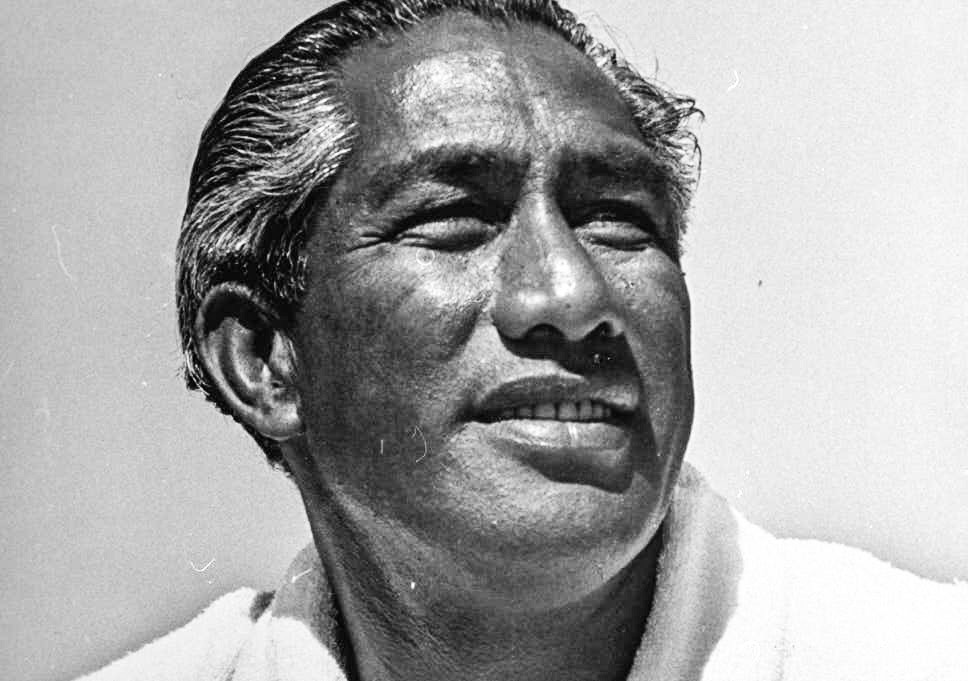
While Duke was never dominated by fortune or fame, he was a natural born businessman and lent his name for a generous profit to Hawaiian and American surfing teams, gear and competition. King Kamehameha, the native Hawaiian king responsible for uniting all eight Hawaiian Islands, prophesied that “before the native Hawaiian race died out, one man would bring it fame”. Most natives believe that Duke Kahanamoku fulfilled that prophecy. Since his passing in 1968, Duke was named Surfer of the Century by Surfer Magazine.
Throughout his life Duke Kahanamoku was beloved for his sportsmanship, humble attitude, positivity and amazing skill in the water. Next year in the 2020 Tokyo Olympics, surfing will make its debut as an olympic sport. We can’t help but feel emotional knowing that one native Hawaiian’s seemingly tiny cultural contribution will soon be recognized by the entire world. Today Duke Kahanamoku remains a legendary waterman, remembered by all, and an inspiration to live life with aloha.
Here at Hanauma Bay Snorkel we strive to live and share aloha, like Duke, every day. We hope that our snorkeling tours bring you memories to last a life time and leave you feeling #luckytovisithawaii.
When Hawaii Kai puts on an event that we plan to attend, we can’t help but share it with our Hanauma Bay ‘ohana. We love our community and those that make it such a special place to live. There’s a certain kind of pride that comes with living in HK, and this month we’re here to spread a little of that aloha to you!
First things first, Farmer’s Market season is fully-fledged and we think it’d be selfish to keep Hawaii Kai Towne Center’s to ourselves. Stop by the Marina Courtyard every Wednesday and Saturday, beginning at 7:30a for some local produce and goods.
In addition to the Farmer’s Market twice a week, be sure to mark your calendars for Saturday, June 29th. Mele on the Marina returns to the HKTC stage with a bang. Bring the entire family and a few foldable chairs to this free event. The magic begins at 3pm with hula performances by Ka Pā Nani ‘O Lilinoe, followed by Hālau Kawaihoa at 4pm. The Hawaiian entertainment doesnʻt stop there — catch local boy, singer/songwriter Kalaʻe Camarillo on at 5pm and Nā Hōkū Hanohano award winner Led Kaapana at 6pm. The master slack key guitarist and Grammy award nominee, best known for his unique voice and layback local style, will close the night with a Hawaiian-style performance that will surely leave you in awe and inspired. There’s a reason he entertains all over the world!
While we consider ourselves the masters of Hanauma Bay snorkeling, Hawaii Kai Towne Center is East Oahu’s number one spot for retail and dining, and is known as the all-around community gathering place. We spend quite a bit of time there and love that Mele on the Marina allows us to shop, eat and witness a little bit of aloha all in one place! Follow Hawaii Kai Towne Center on Facebook at www.facebook.com/HawaiiKaiTowneCenter and Instagram @hawaiikaitownecenter for more event listings, special promos and updates.
Know of any other upcoming community events? Shoot us a comment below, we’re honored to call Hawaii Kai home and are always up to support local.
Summer is quickly approaching, that sweet Hawaiian sun will soon be shining harder than ever, and with endless outdoor adventure comes the need to hydrate. Our bodies are primarily made of water. The human anatomy uses water in its cells, organs and tissues, in which it helps to regulate temperature and maintain bodily functions. As we breath, sweat, and digest our food, it’s important to replace the fluids in our bodies by drinking and eating foods that contain water. We’ve all been guilty of ending the day without being able to remember the last time we took a sip of water. We get it— trying to drink more water can sometimes seem..tortuous! This month we’re dishing 3 tips to drink more water this summer.
- ADD FLAVOR
There are lots of ways to add flavor to your hydration. We suggest filling a pitcher with water and steeping it with fresh fruit, vegetable slices and herbs. Play around with different combinations, we really love cucumber mint or lemon lavender. Remember: The longer you steep, the taster each sip will be. - DILUTE SWEET DRINKS
Drinks like lemonade and fruit flavored iced teas often come mouth-puckeringly sweet. In these circumstances we recommend adding an extra scoop of ice or diluting your glass with an extra cup of water. This will both satisfy your sweet-tooth and increase your water intake. - REWARD YOURSELF
I think we can all agree that being rewarded for meeting a goal is awesome. We recommend setting hydration goals and rewarding yourself after each week of completion. As you continuously fulfill your goals, increase the significance of your reward. Drink your Yes, the health benefits that come from staying hydrated should be enough of a benefit, but let’s be honest, we all deserve a little something extra every once in a while.
Water keeps our bodies in check and it’s up to us to make sure we’re getting the right amounts of it. We hope these three simple tips will help you increase your water intake this summer. We need to do what’s best for our bodies to allow ourselves the opportunity to make the most out of life. Whether that opportunity is exploring Hawaii’s underwater paradise or spending quality time with family and friends — give yourself that choice! Stay hydrated and give us a call to book your next Hawaiian snorkel adventure.
Sustainability has become a topic of conversation in America over the past decade. People are looking for ways in which they can take care of the planet, and we could not be more on board. Here in Hawaii, we call the concept of respecting the land mālama ʻāina. What better way to celebrate Earth Day on April 22 than by showing your aloha for the world to which billions of human beings call home.
Native Hawaiians have always considered sustainability best, and lived in ahupua’a to execute that approach. As director and founder of Hoʻokipa Network, Puanani Rogers best explains ahupuaʻa as “an ancient [Hawaiian] concept of resource use and management based on families living in a division of land that connects the mountains to the reefs and the sea.” While we don’t live by ahupuaʻa in this modern day, we still greatly benefit from the land. Mālama ʻāina means to nurture the land always so it may continuously sustain life for us now and in the future. Below are 3 ways to mālama ʻāina today!
- REDUCE REUSE RECYCLE
We can minimize our carbon footprint and care for the land by reducing the amount of waste we create. We suggest examining what you are using, and what you use it for. In other words— purchase with purpose. At all costs, try to create multi-uses for one item. Rather than buying a coffee maker and a cappuccino maker, purchase a coffee pot that gives you the option to do both. This eliminates both the amount of production as well as the amount of packing material. Instead of buying paper napkins, invest in reusable ones. Remove your name from paper mailing lists that disinterest you, or opt for a paper-free version. Avoid using “disposable” anything, because while we immediately rid such trash from our homes, it is still waste to the environment. Repurpose old mason jars to store loose items or pens. Donate old clothes to charity and check second-hand stores before purchasing new. We are believers in the recycling process, we support transforming old things into raw material to shape new items. - SUPORT LOCAL BUSINESS
Locally owned businesses usually require less transportation for goods. These shops are typically set up in a town or city center near you as opposed to requiring major development. This generally results in less city congestion, less natural habitat loss and less pollution. Studies also show that local businesses help to strengthen the economy of that same community. All in all, shopping local leads to a healthy
‘āina, and healthy ‘āina results in happy people. - TEACH THE KEIKI
If we can instill an ‘āina-based mindset into our keiki (children), that is to care for people and our planet, we can assure a happy and healthy future. Teach your children about recycling, teach them of the responsibilities we have as human beings, teach them about how our decisions affect nature. By encouraging mālama (care) towards land, ocean and air, we will strengthen the relationship between the earth and its inhabitants. It’s as simple as the Golden Rule itself— treat others the way you would want to be treated— with love and respect.
Native Hawaiians have known it all along— if we care for the land it will continuously provide. Reduce, reuse and recycle to keep your carbon footprint at a minimal. Support local business for community and economical longevity. Teach your children about the earthly responsibility we have as human beings. We hope you remember to mālama ʻāina today and everyday. We only have one planet earth, and it’s up to us to take care of it.
Princess Bernice Pauahi Bishop was a strong, intelligent, benevolent, Hawaiian woman who performed her kuleana (responsibility) as royalty to perpetuate her culture and serve her people.
On December 19, 1831 Pauahi Pakī was born in Honolulu to parents Abner Pakī and Laura Konia Pakī. Pauahi was the great-granddaughter of Kamehameha The Great, the ruler who united all of the Hawaiian Islands in 1810. Pauahi grew up with strong Hawaiian values, and a western and Hawaiian education. She thrived in school and was gifted in many ways. She was known for her generosity and kindness.
At 18 years old Pauahi married Charles Reed Bishop. Bishop was an American businessman who made Hawaii his home. He became a pillar in the Hawaiian government, known for his success as a businessman, banker and philanthropist.
Pauahi and Charles shared a love for travel, museums and art. They did not have any children of their own and made it a point to look out for the native Hawaiian youth. As the last royal of the Kamehameha bloodline, Bernice Pauahi inherited nine percent of Hawaii’s total acreage making her the largest landowner in the Hawaiian Kingdom.
At the time of Pauahi’s birth the Native Hawaiian population lived near 124,000. In 1883, a year before her death, the population had dropped nearly 80,000. Pauahi lived through the rapid decline of population, and with the drop in people came the loss of Hawaiian tradition, culture and language. As a learned woman herself, Pauahi believed that her people would benefit from education. She left her entire land inheritance to found Kamehameha Schools.
After her death in 1884, Charles Reed ensured that his wife’s wish was fulfilled. Along with some of his own funds generously donated, Charles oversaw the construction of Kamehameha’s facilities. Both Pauahi and Charles were sure to guide their trustees in the direction that would uphold Pauahi’s vision to perpetuate her culture and build a future for her people.
As of June 2014, Pauahi Bishop’s estate and other assets are valued at about eleven billion dollars. Pauahi’s contribution now supports Kamehameha Schools, a statewide system providing education to more than 48,000 students a year.
Known for her giving nature and sweet spirit, Pauahi ensured that countless generations of native Hawaiians would have the opportunity to share in her love of education. We’re so grateful to live in a paradise full of that same aloha, we truly are #blessedwelivehawaii.
They may not be as popular as Waikiki or Diamond Head, but they are just as important (dare we say even more important) to perpetuating Native Hawaiian history, as well as Oahu’s culture and sense of place. This month on the blog we’re talking about 3 sacred ancient Hawaiian sites on Oahu. These sites include heiau (places of worship), fishponds, and pohaku (stones).
- The largest temple on Oahu, Pu’u O Mahuka Heiau, sits on nearly two acres overlooking Waimea Valley. This heiau was said to have been built in the 1770s, a time of political disorder. The temple was more than likely built as a sacrificial temple, specifically for successes in war. It was designated a National Historic Landmark in 1962, when it became the center of a Hawaii State park.
- Located on slopes of Kahana Valley overlooking the bay is the Kapaele’ele Koa fishing shrine. From this vantage point along the western side of the valley, fisherman could spot the schools of fish in the bay and signal fishermen in the water to surround them. Offerings were given at their sacred shrine to assure a bountiful catch.
- The Kukaniloko Birthstones is the first historic site on the island to be officially preserved and protected by the state. From as early as 1100 to the 1700’s, the daughters of Hawaii bearing children who would later become chiefs traveled to Kukaniloko to give birth. The location of the pohaku holds much significance as it sits in the spiritual piko (navel) or center of the island. Giving birth at this sacred site was a way to ensure a child’s high-ranking status. According to S.M. Kamakau, a 17th century historian, “if a chiefess entered and leaned against Kukaniloko and rested on the supports to hold up the thighs in observance of the Liloe kapu [prescribed regulations for birthing], the child born in the presence of chiefs was called an alii, an akua, a wela—a chief, a god, a blaze of heat.” Today visitors are able to see the original stones scattered under a grove of trees.
We look forward to spotlighting a few more sacred historic sites as the year goes by, and we hope that you enjoy learning about them as much as we do. Our goal is to help perpetuate this place we love so dearly, as well as its rich and loving culture.
Itʻs not often that weʻre dishing event details on our blog, but when we do itʻs because weʻre excited for whatʻs coming. 2019 is in full effect and we want to get things off to a solid start here at Hanauma Bay Snorkel Adventures. As mentioned in this post from August 2017, “we are defenders of Hawaii, supporters of Oahu and advocates of Hawaii Kai.” Another event is coming up right here in our hometown and we want you all to be in the know!
This month the Hawaii Kai Towne Center is putting together a community spotlight called 96825 Live and we’re excited about it. On Friday January 25th bring the entire ohana to enjoy performances from Ka Hale I O Kahala Hula School and the Hawaii Kai Dance Academy. Performances will take place on the marina docks at 5 and 6:30pm.
96825 Live is an event that will bring the talent of the community into the spotlight. Be prepared to witness Hawaii Kai’s very own artists, musicians, dance groups, school groups and more. Grab some food, pop up a couple of chairs and discover what makes Hawaii Kai so special at this free and family-friendly event at the Hawaii Kai Towne Center.
From nationwide brands to local businesses, Hawaii Kai Towne Center is East Oahu’s leading retail destination and community gathering place, guaranteed to have something for the whole family.
Follow Hawaii Kai Towne Center on Facebook at www.facebook.com/HawaiiKaiTowneCenter and Instagram @hawaiikaitownecenter for more event listings and updates.
Do you know of any other events coming up in the community? Let us know in the comments below. We’re always up for supporting this beautiful place and it’s people. And for any of you wanting to explore Hanauma Bay’s underwater community, give us a call — we’re experts when it comes to snorkeling and adventuring the bay!
Christmas is right around the corner, and with it comes gift giving to the people you love most. If you are in the market for a present for the beach goer in your life, stay tuned. We’ve got 6 gift ideas just for you!
SAND AND WATER RESISTANT BEACH MAT
No body likes a wet, sandy butt. Enter this sand-free, dual layer mesh technology, waterproof beach mat. This mat is easy to clean and dries instantly, we call it absolutely necessary for families with small children. It folds small and is easily transferable, making it the perfect gift for the especially spontaneous beach goer.
Rather than piling on the slippers, beach totes and random rocks, gift these anchor clips to someone who’s towel is always blowing away. Simply clip them to the corners of your towel, stake them into the sand and enjoy the beach without worrying about your towel folding over. We highly suggest these cute and affordable clips from Amazon.
No matter how much you love the beach, no one wants to take it home! This mesh beach tote is a must for any beach lover. Carry everything you need to the beach and leave with nothing more. Keep the sand where it belongs!
This waterproof case fits all phones up to 6.0” diagonally. This case may also provide protection for your ID, credit cards, cash money, keys and other small essentials. Allow your beach lover to maintain full screen functionality while out in the water. This case even comes with a neck strap for convenient carrying.
This bamboo pair of sunglasses is lightweight, polarized, durable and stylish — a beach goers dream. And because these glasses float in the water, he or she will never have to worry about losing them! We often talk about the importance of protecting our skin from the sun that we sometimes forget that our eyes need protection as well.
This portable safe is made to withstand everything that comes with a day at the beach. Its water resistant design and durability keeps your belongings, including your phone, jewelry, car keys and wallet, all in one place and safe to ensure maximum beach fun.
We hope our list of gifts for the beach goer in your life will help you out during the Christmas crunch time. We are so grateful for all of you, and would like to wish you all a Mele Kalikimaka and Hau’oli Makahiki Hou!
The coral reef plays a significant and insightful role in Hawaiian mythology. The Kumulipo, a native chant about creation that follows back to the beginning of time, eloquently states that coral was the first living thing on earth. As children of the ocean, that makes coral the first liquid incubators of life on planet earth. This month on the blog we’re talking about our gorgeous coral reefs and the part we can play in protecting these beautiful living creatures.
Coral reefs are described in many different shapes and colors. Some start as tiny plates and fingers and grow to become large extensive mounds which then become home to endless colonies of ocean life. You might compare a mound of reef as a city or hotel to fish, urchins, squid, snails, eels, etc. Without the proper shelter and food there is no marine life and without marine life, there is no us. This leads us to firmly believe that one, the only good place to stand in the ocean is on the sand. Two, take time to learn about an area before deciding to play in the ocean. If coral reef is around, be extra careful of where and how you have fun. Three, in some places feeding fish is completely illegal, and in most cases it’s a good idea to keep your food to yourself. Feeding the local marine life may disrupt the regular cycles of the reef. Four, use sunscreen that contain clean chemicals.
Most commercial sunscreens have two specific chemicals that are banned in Europe and Mexico — oxybenzone (benzophenone-3) and octinoxate. Both chemicals have become a pressing concern to the state of Hawaii. In a study conducted by the Haereticus Environmental Lab in Clifford, Virginia, oxybenzone was shown to damage the DNA of coral larvae, thus causing deformities in growth. What’s especially worrisome is that damage from such a chemical occurs at minuscule concentrations. In layman’s terms, it takes a really small amount of oxybenzone to do a whole lot of damage.
You might be asking, so what can I do to help manage the issue? A good idea would be to stay out of the sun at peak UV times between 10 in the morning and 2 in the afternoon. A better idea would be to use sunblocks that contain zinc oxid or titanium oxide rather than harmful chemicals like oxybenzone. The best idea would be to cover up when choosing to play in the ocean. It’s smartest to wear a rash guard, swim shorts and wide hat while only applying sunscreen to your face, neck, feet and hands. This reduces the use of use and risk of sunscreen pollution by almost 90 percent.
We understand that changing your sunscreen and covering up when planning a day at the beach won’t solve all of the ocean’s problems, but it is a choice that we can make and a choice that will, in the long run, benefit all of us. Some coral reefs may be tiny, but their purpose on earth is immense. Here at Hanauma Bay Snorkel, we are all about keeping our oceans and our island in tip top shape — the earth needs us now more than ever, let’s make conscious decisions to help her out.
While most people pay a visit to Oahu for the insane beaches, unmatched weather and mouthwatering food, others come to swim with sharks and zip line through lush green mountains. For all of you adrenaline-junkies who are looking for a good time in paradise, below is a list of three hair-raising adventures you can find on the island.
SWIM WITH SHARKS
How about an adventure that very few encounter while spending time in the Aloha State — swimming with sharks. IslandView, a North Shore based adventure company, will lead you to the deep blue waters off of Haleiwa to splash around with manō (sharks) — no bars, no cages, just the open ocean and you. Captain Kaiwi and his crew will be sure to show you a thrilling time.
SKYDIVE
After taking in the panoramic views of Oahu’s gorgeous terrain, let loose (literally) into the Hawaiian skies at 14,000 feet up. The Pacific Skydiving Center will safely escort you through an experience you are sure to always remember.
ZIP LINE
Take to the mountains at Kualoa Private Nature Reserve. 7 unreal tandem sections, 2 suspension bridges and 3 mini-5 minute hikes will definitely get your blood going. From start to finish, you can be prepared to take in unreal views of a true paradise on earth, stacked with lush looks at the Ko’olaus and exhilarating glimpses of the Pacific Ocean.
Here at Hanauma Bay Snorkel Adventures we are true believers in Hawaii. Explore this paradise we’re lucky enough to call home — meet the locals, enjoy the beaches, then get a little crazy with an adrenaline-pumping adventure! Should you have any questions with finding your thrill, contacts us — we’d love to help you out!

